Colleen Mondor's Blog, page 3
January 3, 2015
Obituary for my stepfather, Edmund B. Everette
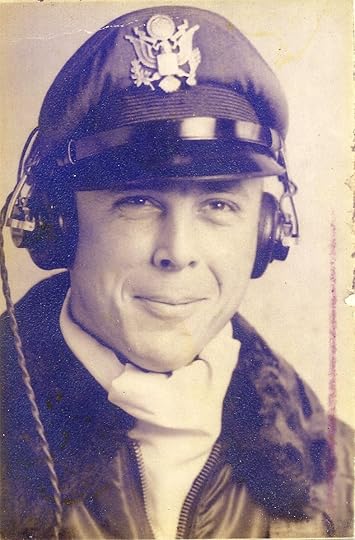 Due to an epic failure between the funeral home and local newspaper, my stepfather's obituary will not run this weekend as promised to us. I am loading it here in the hopes that I can spread the word at least a bit this way.
Due to an epic failure between the funeral home and local newspaper, my stepfather's obituary will not run this weekend as promised to us. I am loading it here in the hopes that I can spread the word at least a bit this way.
Edmund B. Everette passed away on December 28, 2014. He is survived by his loving wife Maureen and children, Edmund Jr, Donna, Patrick and Colleen and grandchildren Hannah, Ben, Pierce and Emma.
Ed was born on a farm near Lake City, Florida. He attended the University of Florida with plans to teach and farm but the Korean War changed that. He enrolled in AFROTC and upon graduation was commissioned as a lieutenant in the USAF. He completed flight training and served in the US and Japan before being stationed with the Tactical Air Command and later attended Command and Staff College. He was assigned to the Fourth ATAF in Germany and was then sent to Vietnam where he was a squadron operations officer and commander with Forward Air Control. He flew more than 600 hours of combat time and was awarded numerous air medals and the Distinguished Flying Cross. He then was assigned to the Joint Chiefs of Staff in operations and was briefer to the Chairman. His last assignment was Chief of Operations Air Base Group at Patrick AFB.
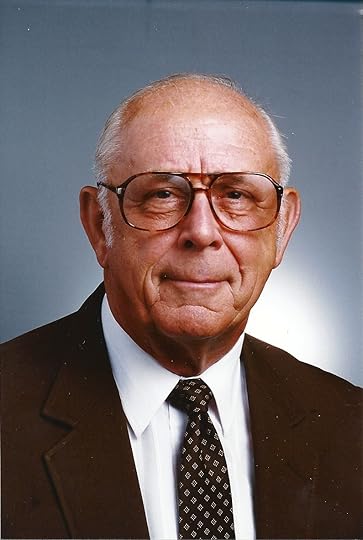 Ed then obtained his FAA flight instructor ratings and was employed by Florida Institute of Technology as a flight instructor and professor. He earned an MBA there and held various positions until appointment as Dean of the School of Aeronautics and President of FIT Aviation. During his tenure, the School of Aeronautics grew to over 850 students and averaged 50,000 flight hours a year.
Ed then obtained his FAA flight instructor ratings and was employed by Florida Institute of Technology as a flight instructor and professor. He earned an MBA there and held various positions until appointment as Dean of the School of Aeronautics and President of FIT Aviation. During his tenure, the School of Aeronautics grew to over 850 students and averaged 50,000 flight hours a year.
After Ed obtained an FAA grant, a new building, now called the College of Aeronautics, was constructed on campus. After leaving FIT he was named Professor Emeritus and became the Florida representative for the Aircraft Owners and Pilots Association.
During the course of his career, Ed logged over 10,000 hours of flight time and was recognized by the FAA with the Wright Brothers Master Pilots Award for more than 50 years of accident-free flight.
A celebration of Ed Everette's life will be held at Eastminster Presbyterian Church in Indialantic on January 7 at 1:30 PM with reception following. In lieu of flowers the family asks donations be made to the Wounded Warriors Project.
December 22, 2014
Before After: An art book with the broadest appeal imaginable
This is one of the most ingenious titles I have come across in ages! It's absolutely basic, the simplest design, and yet the more pages you turn the more appealing it becomes.
On the left side is an image representing "before" and on the right there is "after". The subjects are all over the place - the bud and flower as above and then everything from a honeypot to a beehive, a pigeon to an airmailed letter, a rocket to the moon and a watching lizard to a fly.
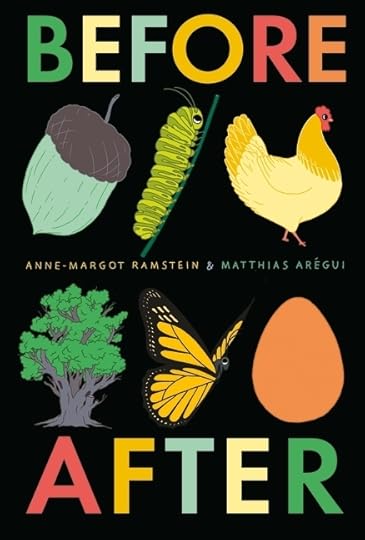 There are no words, just fully painted images that range in size but maintain a muted intensity. The whole thing ends up being funny, thoughtful and utterly entertaining. It also has an unexpected calming effect--one enters a bit of a zen-like state while considering the creativity behind the project and can only wonder what comes next before the page is turned.
There are no words, just fully painted images that range in size but maintain a muted intensity. The whole thing ends up being funny, thoughtful and utterly entertaining. It also has an unexpected calming effect--one enters a bit of a zen-like state while considering the creativity behind the project and can only wonder what comes next before the page is turned.
Before After was published for children but I can't stress enough the timelessness of the design and idea. It's a great book for pre-readers who will love all the humor and making up stories on their own, but any smart and careful reader is going to embrace this book. It's the best kind of cheeky humor and just so lovely to look at--a real treat for young and old.
December 19, 2014
Vango Book 1: Between Sky and Earth - a grand epic tale
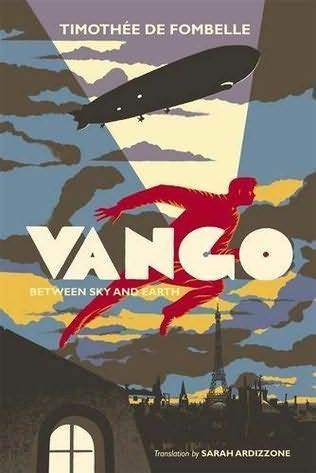 It is not often that I come across a grand tale that unfolds over decades and includes adventure across the land and sky, the pounding drums of war, religion, politics, romance, fast cars, fast boats, the love of a parent to a child, and characters who sweep you along with their words, actions and heart.
It is not often that I come across a grand tale that unfolds over decades and includes adventure across the land and sky, the pounding drums of war, religion, politics, romance, fast cars, fast boats, the love of a parent to a child, and characters who sweep you along with their words, actions and heart.
Frankly, it's almost exhausting to list all the parts of Vango: Between Sky and Earth that I enjoyed.
Vango takes place in Europe between the two world wars. Written by Frenchman Timothee de Fombelle and translated by Sarah Ardizzone, there is a rhythm and tempo to the language that speaks to its historic nature. It reads easily but not casually; I truly felt like I was reading a book written in the 1930s although the pages move with more of a comic book speed than I expected. (This is a very good thing by the way.)
The title character, Vango Romano, is a young man who bursts onto the opening pages as he is accused of murder in Paris. Quickly the text moves from his rooftop escape, to the police, to those who witnessed his escape, to a mysterious meeting in Sochi, Russia and and then back sixteen years to Vango's own childhood in Sicily. The reader might be a little confused at first as the action jumps quickly in and out of different characters and back and forth across the map and time, but soon enough it becomes clear that everything is connected. (Also, the time periods and locations are clearly marked at each chapter.) Studying those connections is part of the joy in reading here, as Vango's life became more and more significant as each page turns.
There is no magic in Vango, this is realistic historic fiction where the bad guys are terrifying enough without adding fangs and fur. As the heroes and villains circle each other and the clues are dropped to Vango's past and future, the novel moves from thriller to mystery to political intrigue. By the final pages it all comes together and everyone plays their parts in grand fashion.
Big moves, big action, big issues are the stuff Vango: Between Sky and Earth are made of. Next up is the sequel, out now in Europe, Vango: A Prince Without a Kingdom. which I'm really looking forward to reading.
December 16, 2014
Going Over by Beth Kephart & wondering why we don't have more Cold War novels for teens
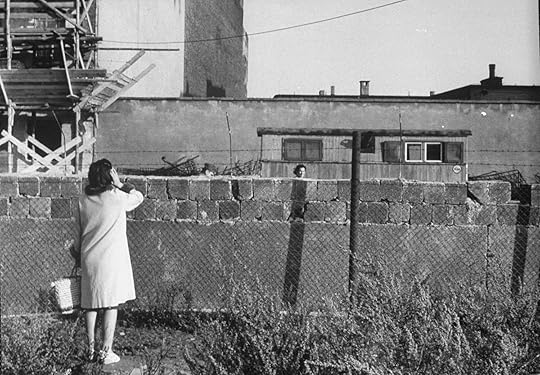
Set in 1983 Berlin, Going Over is a combination of romance and coming-of-age that dwells a lot more with the fallout of the Cold War than just about any book I have read for teenagers. It works because the plot is driven less by the international politics of containment then the angst of Ada, 16, and Stefan, 18, who are separated by the Berlin Wall. They don't have hopes of changing the world, they'd just like to hang out together when they want to which is not easy with all the concrete and guns between them.
Basically, Stefan's got to go over the wall.
Before we get to the adventure aspect ,(which is comparatively quite brief), Kephart immerses readers in the complicated relationship between Ada and Stefan, whose grandmothers are childhood friends who became separated when the wall was constructed. Over the years Ada and her grandmother traveled to East Berlin to visit, (a relatively common occurrence readers may not know about), and what began as a friendship between the children slowly became more.
Stefan's life is small; his future predetermined by the stringent rules of education and work that dominate socialist society. Ada, a graffiti artist who lives with her mother and grandmother and works in a small day care, is wide open to possibility. Her Germany can be grim as well, but the chance of what might happen next is something she embraces. Ada is all about taking big leaps and encourages (practically forces!) Stefan to consider big leaps as well. Fearlessness doesn't come easy to East Germans however, not with so many examples of how badly things can go when you try to be brave.
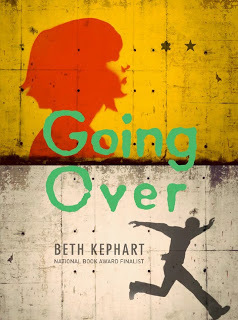 In hoping to persuade Stefan to leave, Ada collects reports on successful crossings and smuggles them in to him to read. (These are all true.) Bit by bit, Stefan forms a plan, while on the other side Ada watches and waits and dreams of a world where they are both able to imagine a future of their choice.
In hoping to persuade Stefan to leave, Ada collects reports on successful crossings and smuggles them in to him to read. (These are all true.) Bit by bit, Stefan forms a plan, while on the other side Ada watches and waits and dreams of a world where they are both able to imagine a future of their choice.
Going Over is a teen novel of far bigger ideas than most I have come across. The setting is brilliant and the split narrative, between Ada and Stefan, provides readers with a close look at just how different Berlin became after the split. (Which also makes the reunification that much more impressive.) There are so many novels set during WWII, while the Cold War remains stubbornly overlooked. I'm thus delighted with what Kephart has done here and find these characters, in their decidedly European setting, to be different in the best way. It's a thought provoking title with exceedingly likeable characters and a great ending; all of which make Going Over a winner.
[Post pic courtesy LIFE of a mother & daughter speaking across the wall in August 1961.]
December 15, 2014
Round-up of recent reads
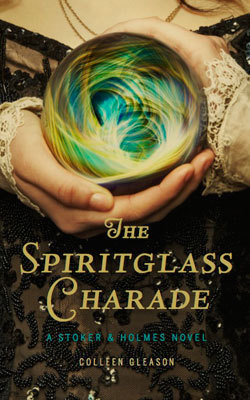 Capsule reviews on several recent reads for those looking for a recommendation or two:
Capsule reviews on several recent reads for those looking for a recommendation or two:
Young Woman in a Garden by Delia Sherman. This is the first short story collection from this prolific and outstanding fantasy author. Sherman is tough to pin down; her stories (and novels) are sly and wink a bit at expectations. Sometimes the fantasy elements are barely there--a whiff of a ghost story perhaps as in the title story, or suburban witchcraft in "Walpurgis Afternoon". The point is not always even the fantasy, as significant as it might be to the plot, but rather the characters and the setting and, (I love this), the language.
Delia Sherman writes sentences you want to read out loud and that, perhaps more than anything, is why I advise you to read each and everything she ever writes.
Unwept: Book One of the Nightbirds by Tracy & Laura HIckman. The set-up here is straightforward: Ellis is on a train alone with a nurse who is also caring for an infant. Most of her memory is gone and the nurse assures her that she is being sent to stay with family and friends in a small town to recuperate from a long illness. Everything will be better if she rests in Gamin with her cousin Jenny. But then of course, after she arrives, nothing is as it seems.
The tension in Unwept is outstanding and readers will find themselves flinching along with Ellis as she finds herself uncomfortable and alarmed while among the local literary group, "The Nightbirds," who claim to be her dear friends. As she puts things together, and finds more reasons to be afraid, the book shifts into thriller mode. It's set up for a sequel (of course) and I hope the reasons behind all this drama get fleshed out more. But a solid start and a true page-turner.
The Spiritglass Charade (A Stoker & Holmes Novel) by Colleen Gleason. Evaline Stoker, vampire hunter, and Mina Holmes, detective, return for this next adventure in an alternate Victorian London. This time the teens have been tasked to help a friend of Princess Alix , 17 year old Willa who has become obsessed with spiritualism as she searches for clues about her missing brother's whereabouts. The princess thinks Willa is being taken advantage of and Mina immediately agrees. There is a lot more going on though, including Charles Babbage's computing machines, vile murder, sleep walking, and vampires (of course!).
What I like about the Stoker & Holmes books is that the lead characters are not great friends. They are prickly characters who have been brought together by circumstance and continue to work together because otherwise they would be bored out of their minds. But Evaline & Mina don't especially like each other. They do however trust each other and that is important. In the midst of chaos, both professional and personal, they know they won't let each other down. Their evolving relationship is what draws me in even more than the mysteries themselves (which are always fun). Good stuff for the 13 & up crowd.
Nobody's Home: An Anubis Gates Story by Tim Powers. This novella might appeal more to fans of Powers and his wicked creepy 19th century London than anyone else, but I found it a lot fun to read, especially as the two main characters are young women who defy quite a few expectations.
Jacky Snapp is looking for the man who killed her fiancee Colin when she saves Harriet, who is under attack from the ghost of her husband. (Already crazy weird, right?) Post scuffle, Jacky and Harriet find themselves catching the attention of a lot London's ghosts and must travel to a barge moored below Westminster Palace called "Nobody's Home". They might have to pay in blood, but Nobody is their only shot to lose their attraction to London's ghosts. As it turns out though, Nobody knows a lot more about Jacky then she suspects.
Loads of atmosphere, breakneck pace, smart characters and no shortage of creepiness. It's short, fast and fun and includes outstanding illustrations from JK Potter. It's an expensive stocking stuffer, but Powers fans will be thrilled. (Excerpt here.)
And beyond these books there have been several for Booklist which I can't talk about and one for Locus which I can't talk about and....well, a couple of others but I'll post about them tomorrow.
December 12, 2014
"It has to start with the art"
This book comes with a certain amount of baggage because Amanda Palmer, of the largest Kickstarter ever, of the viral TED talk, of the marriage to Neil Gaiman and the punk cabaret sound and the look that no one completely understands, is a person who carries a lot of baggage. Some folks love her and some folks hate her and some folks won't be able to set aside comments they might have read online or things they heard about her when considering her book. But they should, because it's really something special.
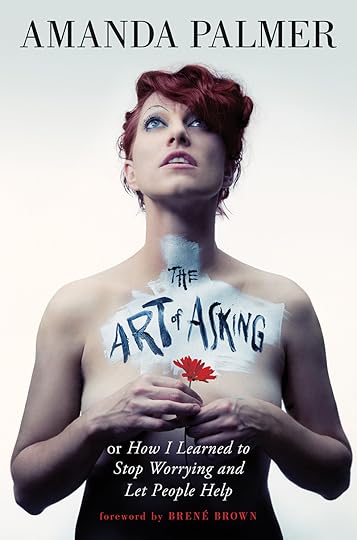 The Art of Asking is about Palmer's experiences as a creative person and how she has both made her music and supported herself while doing it. One of the key issues she brings up early on is how much she did not want a job, which we all know is not the same thing as earning a living. Everyone and their cousin told her over the years that she needed a job and supported her efforts at obtaining jobs while also making clear more than once that making art (or words or music or sculpture) is not the same thing as working. (And consequently, not a job.)
The Art of Asking is about Palmer's experiences as a creative person and how she has both made her music and supported herself while doing it. One of the key issues she brings up early on is how much she did not want a job, which we all know is not the same thing as earning a living. Everyone and their cousin told her over the years that she needed a job and supported her efforts at obtaining jobs while also making clear more than once that making art (or words or music or sculpture) is not the same thing as working. (And consequently, not a job.)
All of you who proudly told your parents you wanted to be a writer (or artist or musician or...) and were answered with the words "That is a good hobby but you need to set yourself up for a decent career first," well, you know how frustrated Palmer was for a long time and you can't help but admire her decision to strike out on her own and set herself up on a crate as a living statue in Harvard Square. What she learns through this daily interaction with strangers (and the money they give her) changed her life and set her on the path that eventually led to where she is today.
What I got from The Art is Asking is less a dose of personal empowerment (although it's certainly here) but more some serious thoughtful writing on figuring out what you want to do as a creative and how to get to that place. Palmer's message is that you have to accept help when it's offered and not be afraid to ask, but she is also serious about the level of hard work involved as well. You have to be willing to stand in the rain in Harvard Square dressed as bride if need be; you have to keep your eye on the goal and not be dissuaded by the doubtful chorus that might be filling your ears.
Honestly, I'm still thinking about much of what I've read and over the next couple of weeks I plan to read The Art of Asking again. I spent a lot of years cultivating a professional existence that did not include the word "writer" in it, because I thought that was what any writer, other than someone impossibly famous, (hello Stephen King & Nora Roberts), was supposed to do or expected to do or had to do.
We all waste so much time thinking that way, don't we? Palmer has challenged that belief every step of the way and how she got to the moment she's living now makes for fascinating reading and, if you are a creative, sheds some light on just how you might alter your path as well. That's she's remarkably candid about her own missteps and fears is just icing in the cake of this truly outstanding book. I wish I had it when I was 21 but mostly, I'm glad to be reading it now.
December 11, 2014
Meg Wolizter's Belzhar and the enduring Sylvia Plath
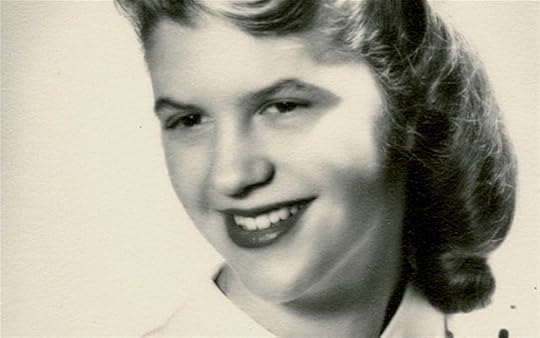
I surprised myself the first time I read The Bell Jar by falling hard for Sylvia Plath's autobiographical novel of a young woman in New York City and the fallout of her stressful summer. It was thus the Plath angle that sparked my initial attraction to Meg Wolitzer's Belzhar but that ended up being a way more complicated novel than I expected (with a truly amazing twist).
Introspective Jam Gallahue is a classic Plath heroine. Severely depressed over the death of her boyfriend Reeve, Jam has been sent by her parents to a "therapeutic boarding school" in Vermont. Selected for enrollment into a small English class, she and her fellow students immerse themselves in The Bell Jar and find then begin to experience strange dreams attached to the individual traumas that brought each of them to the school.
Wolitzer uses the class to bring the misfits together and the mysterious dreams cause them to bond rapidly as they share their experiences and why they came to the school. Jam holds out on telling her whole story and watches a lot, observing her classmates and tentatively making friends. Mostly though she immerses herself in her dreams and memories of Reeve, rehashing every moment of their brief but powerful romance. An outsider weighing the draw to fit in, gives the book a classic boarding school set-up and then Wolitzer hits readers with the wallop of a twist that blows every inch of the plot out of the water and yet also makes perfect sense.
I liked the teens in this novel and I think Wolitzer did a good job of showing how some things that bring us down can even be remarkably small but still nonetheless devastating. And I liked how Plath fit into the novel and how seeing The Bell Jar through the eyes of Jam and her friends made me reconsider that novel a bit more as well. If Belzhar ends up being a way for readers to find Plath, then that is a really good thing and why I think that an excellent gift for teenage girls in particular would be copies of Belzhar, The Bell Jar and also Mad Girl's Love Song and Ariel: The Restored Edition.
More on Sylvia Plath at Brain Pickings.
December 8, 2014
And now, tackling the email
Between my website and the email automatically forwarded to me from Guys Lit Wire, I have been averaging about 150 emails a day for a very long time and it is completely insane. I scan through my inbox every morning and delete with abandon, my junk mail is even worse. (I wish I could ignore the junk mail but a couple of times a week real mail ends up in there so I have to check it at least every few days.)
Email is a stupid thing to worry about but when it's there everyday it becomes a burden and when I can't tell what is good and what isn't, my day just ends up starting with an annoyance. So, I decided a couple of weeks ago to start trying to get off some of the zillion mailing lists that I somehow got put on without my knowledge.
My daily goal was really tiny: just open 5 emails and unsubscribe. I figured out pretty quickly that a lot of emails are from the same lists, and also that unsubscribing is not that tough. I was able to get through my five often in just a couple of minutes. Some days that was all I did and I still felt like I accomplished something which was huge.
At least I wasn't just passively accepting all this crap everyday.
Some of the lists respond that it takes 5-7 days to be removed, others say it takes as long as 10 days. Because of that I don't think I'll get a really good idea of how successful I've been until the end of the month. By then, hopefully, I will be left with only the real junk (the Nigerian prince emails, etc.) and then I plan to blacklist those and see if I can outright block them.
I am really puzzled how I ended up on all these list. Several of them involve wine, which I don't drink and haven't ordered. Bloomberg News and the Economist like me a lot - several lists from each of them and again, no idea why. I also get a lot of stuff from people selling window blinds and hair replacement treatments.
WTF?
Today, I am down to 45 emails a day total. Since I doubt I spent 45 minutes of my time getting down to this, I think I've been pretty successful. I'm not done yet, but at least I don't feel angry every time I check my email which is huge.
Ending 2014 this way is actually a pretty good thing to do. Between the e-hoarding and the email, I feel like I'm cleaning up my computer life quite a bit. This week I start on the bookmarks with the same tactic - looking at 5 a day minimum and either deleting or organizing them into folders. I have no idea what I'm going to find but at least this is all stuff I definitely wanted at some point which is a huge improvement over the email.
It's the little things, right? *grin*
December 5, 2014
On e-hoarding
I have decided to get actually serious about redesigning my website and streamlining it in a major way.* I want to lighten it up, brighten it up and find some focus here. I was honestly thinking about suspending the blog for a bit but I need the website for my book and I do enjoy writing about my family history here, so I just decided a change might do the trick.
And then I had to face my e-hoarding issues.
I archive a lot here. I archive all my posts but also, until very recently, copy all all of my reviews and major articles as well. There is a lot of stuff backed up on Chasing Ray that is more about my paranoia of suddenly disappearing from the internet (it's insane, I know) then actually needing to be here.
It has to go.
So, just like we clean out our closets, I am cleaning up my website. I'm not going to worry about deleting everything, but more importantly, I'm not going to worry about copying everything here in the future. I'm going to put up my posts and if I think the world might like to know about an article or review then I'll link to it and that will be enough. And if something disappears from the internet then I need to LET IT GO.
It's like clinging to clothes from high school; embarrassing and stupid and not who I want to be (or how I want to live).
The thing about e-hoarding is that no one else can see it. No one knows about the dead bookmarks I have, or old articles cluttering my hard drive, and few even wander around the web site enough to see those reviews from forever ago. But I know and I can't stand it. I want it all gone and I want the compulsion that makes me keep all this junk gone as well.
It's a little change in the grand scheme of things but a bright one and in the midst of winter, bright things are always good. :)
*This means that I am happily paying Sarah Stevenson to redesign my website as I can't write code to save my life. Thank goodness she knows what she is doing.
December 3, 2014
On the Irish Bridget

I have one Bridget in my family. She was my great grandfather's grandmother (my great great great grandmother). I have only the most tenuous of paper links to her thus far, finding her name on death certificates and in census records for 1900 and 1910. It appears though that Bridget is one of my immigrant Irish relatives, arriving in New York City in the late 1850s. I know that my great grandfather's (he was born in 1888) aunts and uncles were all born in NYC starting in 1860, so Bridget looks to be the one* who made the journey across the Atlantic.
The really weird thing about Bridget though is that she is our only known Bridget. The Irish are notorious for using the same names over again and we have a ton of Johns, Catherines, Roberts, Jameses, etc. When Bridget first popped up I didn't think she was one of mine because we have no Bridgets at all - not as a first or middle name, not as a deceased child - and my grandmother never ever mentioned this name. It's been a little puzzle and then I read the novel So Far Away by Meg Mitchell Moore a couple of weeks ago and I think I found my answer. (Loved the book - highly recommend it.)
In the novel, Massachusetts teen Natalie is working on a family history project while dealing with some horrible cyberbullying. She becomes friends with state archivist Kathleen who helps her read a diary found in Natalie's house. In those pages, they learn about the trials of Bridget O'Connell, an Irish maid who worked for a family in 1920. Here is the bit from the diary that gave me pause:
Ah, Charles had said when I first arrived at their home, a Bridget named Bridget. Because that was the name they gave to all the girls over from Ireland, they called them Bridgets, and while I should have been able to laugh that off, the terrible coincidence of my name, the way it made something I always thought was individual to me common and everyday, I often felt a flame of anger when I heard it. How funny, Charles said. We got the actual Bridget!
Moore listed a reference in her afterword, The Irish Bridget: Irish Immigrant Women in Domestic Service in America 1840-1930. Obviously I'm planning to read this and see what I can learn, but I'm also wondering if this was why Bridget's name was not repeated. Maybe my family found they did not want to use it again when they discovered how other people used it. I honestly don't know, but at least I have an idea now of what might have happened to it.
Now it's back to tracking my Bridget, and seeing what I can learn about her life and how she came to America, an endlessly fascinating mystery!
*Bridget's husband was Michael John or Michael or John (sigh) Lennon, my great great great grandfather. I have next to nothing on him though, so I don't know yet if they were married when she arrived, or if he was NY born.
[Post pic via Times Higher Education.]




